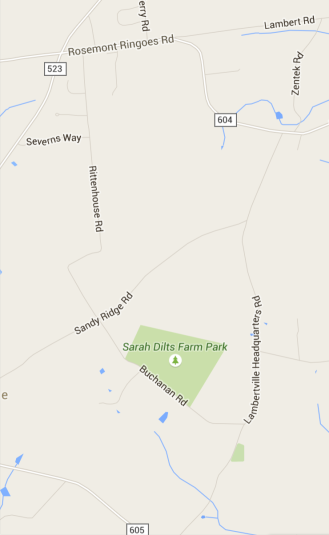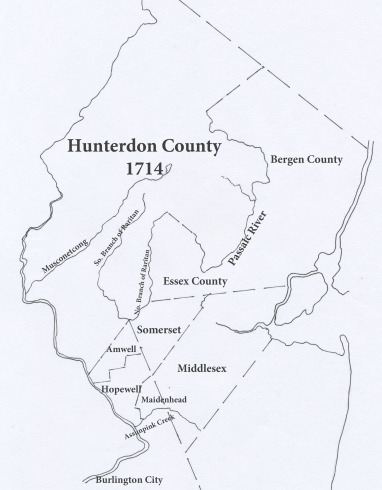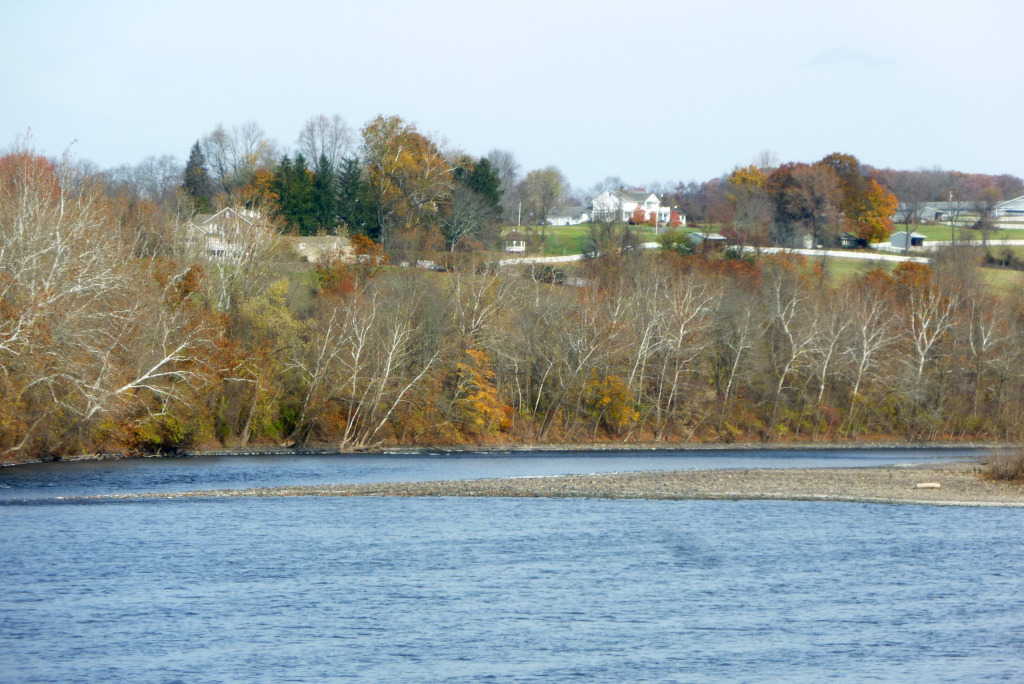There are two farms in southern Delaware Township that are particularly interesting. They were part of the old Dimsdale proprietary tract north of Lambertville until 1750, when John Lambert, a recent immigrant from Connecticut, purchased it.
early settlers
The Moore Family
I have written a few articles recently concerning the neighborhood of Bowne Station (“The Daybooks of Dr. Bowne,” “The Bowne Homestead,” “Bowne Station” and “The Bosenbury and Taylor Graveyards”), and have frequently come across references to the first settlers in that area, one Jacob Moore and his wife, Apolonia Amy Moret. Just when I thought I had published all articles by Egbert T. Bush and Jonathan M. Hoppock pertaining to the early history of the Moore family in Amwell, another one turned up. Actually, two articles, “Old Farms in Old Hunterdon” and “Farewell Relic of Another Age.”
Bowne Station
This article by Egbert T. Bush answers some questions about the Bowne farm that were raised in the previous post, “Dr. Bowne’s Homestead.“1 Lora Olsen had pointed out that there were two houses on the property, one quite old, and one built in the mid 19th century. But it turns out there was a third house—one built for the slaves that lived on the farm.
The Daybooks of Dr. Bowne
Recently I attended a workshop given by archivist Don Cornelius on the holdings of the Hunterdon County Historical Society. They are extensive, far more than I realized. Among them are the original daybooks of Dr. John Bowne of old Amwell Township, filled with the names of his patients and their treatment. These Daybooks are so important to genealogists that someone at the Historical Society has gone to the considerable effort of indexing the names into a card catalog, and—primitive as it may seem to be today—it’s a very useful genealogical tool for the time period of 1791 through 1857.
A Pirate in Old Amwell
When writing about Pine Hill Cemetery recently, the name of John Lewis came up. This reminded me of a wonderful article written by Jonathan M. Hoppock back in 1905 about a mysterious character named Ticnor Lewis who lived not far from Pine Hill. It is one of Mr. Hoppock’s most colorful yarns, and one of his many stories of the early settlers in Amwell Township. This one is based entirely on folklore or family tradition. A bowl-full of salt is highly recommended.
Rittenhouse Road

There is an odd sort of road in Delaware Township, running south from Sergeantsville, that I have often wondered about. It is called Rittenhouse Road, and for much of its length, it runs straight as an arrow, then suddenly does a zigzag before ending at Sandy Ridge Road.
Quite often the very straight roads in Hunterdon County were created as a result of the early, large proprietary tracts that forced roads to run along their borders. But that is not the case here. This road ran through the middle of Daniel Robins’ 700+ acres, surveyed in 1722.
Recital: From Reading to Larison
For those of us who look for genealogical information in deeds, there is a very special word we hope to find: “Whereas.” This wonderful word introduces a clause that should appear in every deed, but often does not—the recital clause, which states who the seller of the property bought it from. Most of the time, that’s all it does—name the preceding property owner. But every once in a while, mostly in the late 18th and early 19th centuries, you will get a recital that goes all the way back to the beginning, to the original proprietary owner.
The Locktown Baptist Cemetery
There has been a Baptist Church in Locktown since the early 19th century, and a cemetery associated with it. The church and the cemetery were located on land belonging to Daniel Rittenhouse, whose home was a short distance west of Locktown on the Kingwood-Locktown Road. Most of the names in this cemetery are of families that lived nearby in Kingwood and Delaware Townships, many of them descendants of original German immigrants. Many of the original stones are now missing, even ones that were inventoried in the 1940s. Old cemeteries are hard to preserve.
The Creation of Hunterdon County, part three
This is the third and final part of a speech delivered on Nov. 16, 2014 for the Hunterdon County Tercentennial. You can find the first two installments here and here.
Petitioning for a New County

With so many surveys being made in the new Indian purchases, it was clear that people would be settling in this area very rapidly. And it was also clear that this new area was going to be hard to manage from far-away Burlington City. The residents of the northern townships in Burlington County were becoming frustrated by the need to travel 20 to 35 miles by horseback to the county seat to record their deeds, probate wills and attend court.1
John Reading and the Creation of Hunterdon Co., part two
This is part two of a speech delivered on Nov. 16, 2014 for the Hunterdon County Tercentennial. You can find the first installment here.
 Moving to Hunterdon
Moving to Hunterdon
I ended the last post with the statement that in 1704, John Reading had a tract of 1440 acres surveyed in the far northwestern corner of the Adlord Bowde purchase. It was an excellent location—superior agricultural soil and access to the river. At this point, the river runs east-west, so Reading’s house could face south as well as face the river, and he had an excellent view of traffic going both ways. He named it Mount Amwell, after his family’s ancestral home in England.